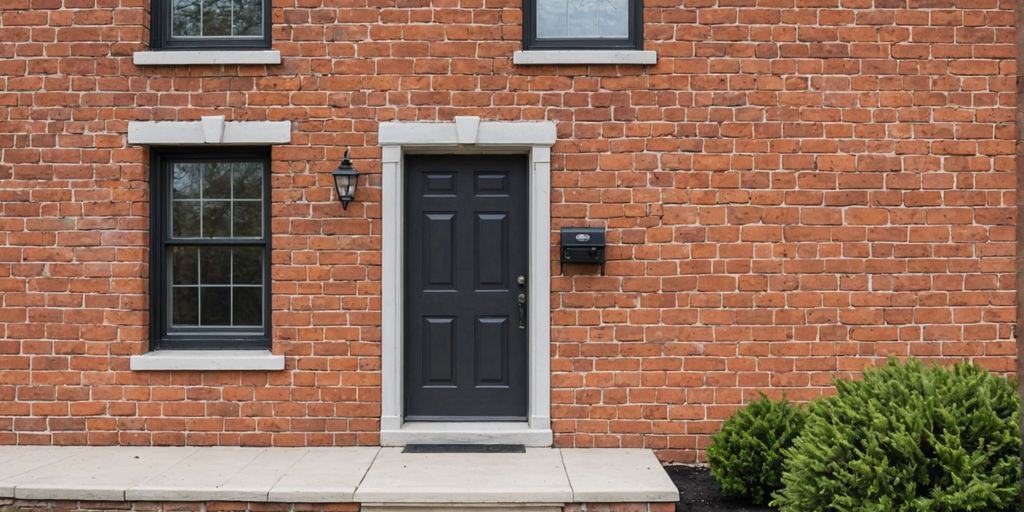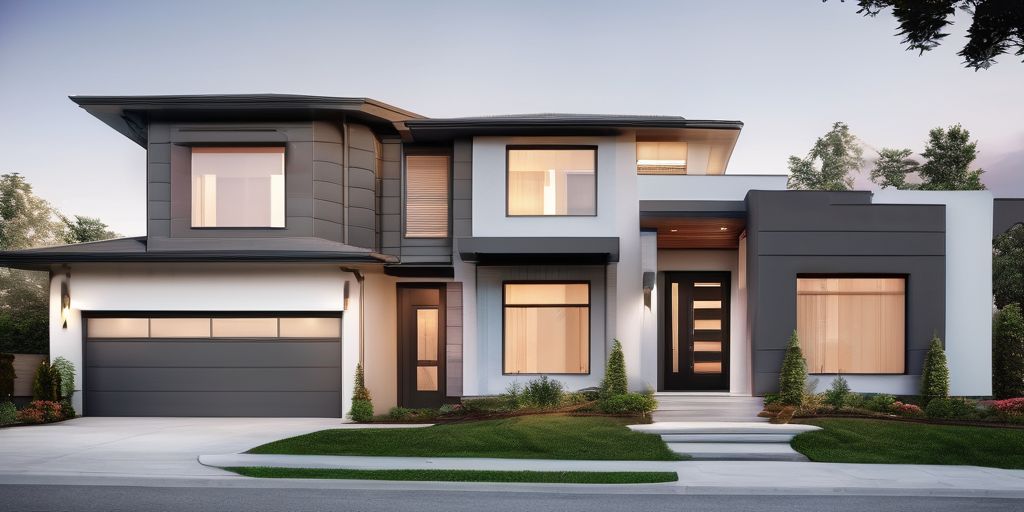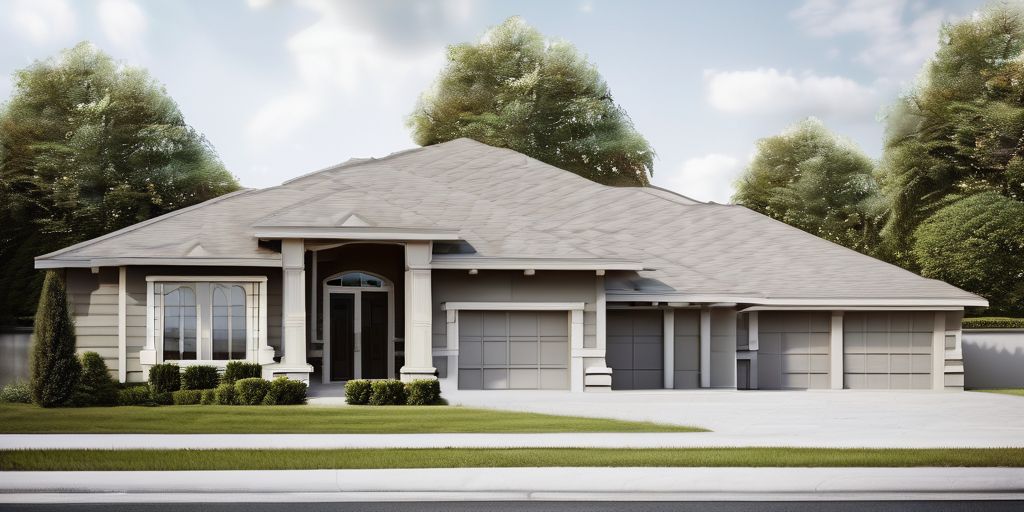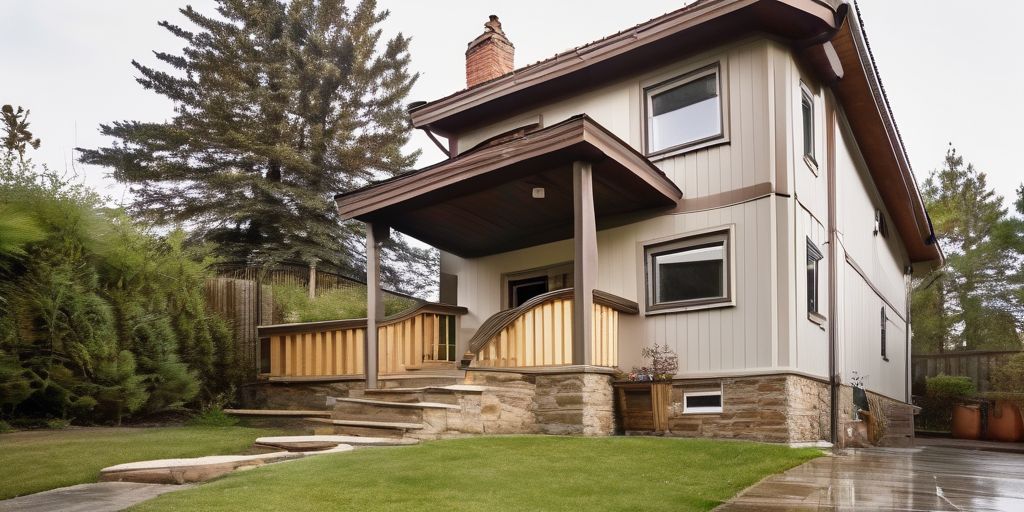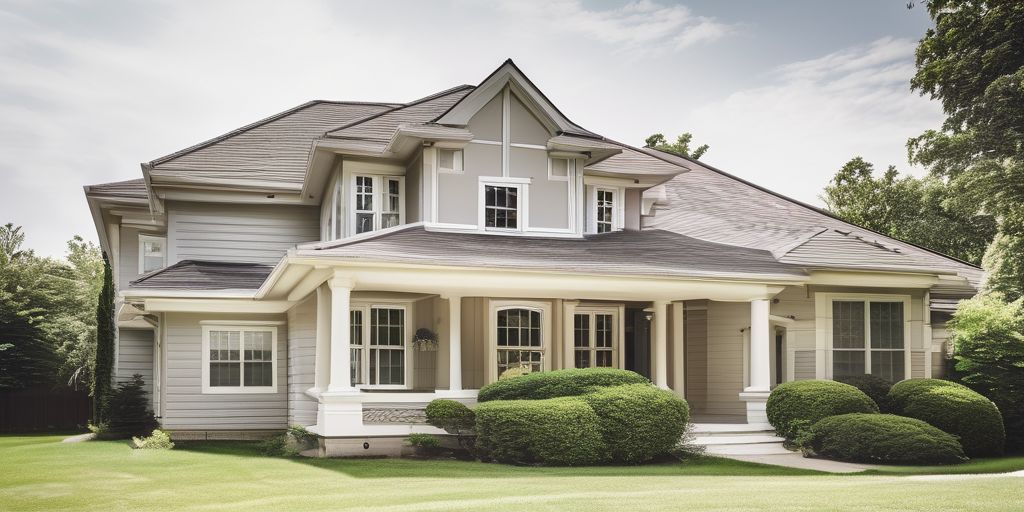Painting a brick house in Oakville can be tricky, especially when dealing with moisture issues. If not handled right, moisture can cause serious damage to the brick and mortar. This article will guide you through understanding moisture problems, preparing your brick house for painting, choosing the right materials, and maintaining your painted brick house.
Key Takeaways
- Moisture can cause major damage to brick houses if ignored.
- Proper preparation is crucial before painting brick surfaces.
- Choosing the right paint and materials can prevent future moisture issues.
- Effective waterproofing techniques are essential for long-lasting results.
- Regular maintenance helps keep your painted brick house in good condition.
Understanding the Impact of Moisture on Brick Houses
How Moisture Affects Brick and Mortar
Moisture can wreak havoc on brick and mortar, leading to various structural issues. Here are some ways moisture affects these materials:
- Brick Deterioration: Excessive moisture can cause bricks to crack and crumble over time.
- Mortar Weakening: Moisture can erode the mortar, making it less effective at holding bricks together.
- Mold and Mildew: Damp conditions promote the growth of mold and mildew, which can be harmful to health.
Common Signs of Moisture Damage
Identifying moisture damage early can save you from costly repairs. Look out for these common signs:
- Efflorescence: White, chalky deposits on the brick surface.
- Spalling: Flaking or peeling of the brick surface.
- Cracks: Visible cracks in the brick or mortar.
- Damp Patches: Wet spots on interior walls, especially after rain.
Long-Term Consequences of Ignoring Moisture Issues
Ignoring moisture issues can lead to severe long-term consequences, including:
- Structural Damage: Over time, moisture can weaken the entire structure of your home.
- Health Risks: Mold and mildew can cause respiratory problems and other health issues.
- Decreased Property Value: A home with visible moisture damage is less appealing to potential buyers.
In Oakville, where the climate can be quite humid, it’s crucial to address moisture issues promptly to maintain the integrity of your brick house.
Preparing Your Brick House for Painting
Initial Inspection and Assessment
Before you start painting, it’s crucial to inspect your brick house thoroughly. Look for any signs of moisture damage, such as efflorescence or spalling. These issues need to be addressed before painting to ensure a long-lasting finish. Use a checklist to make sure you don’t miss any critical areas:
- Check for cracks in the brick and mortar.
- Look for any damp spots or mold growth.
- Assess the condition of previous paint or sealant.
Cleaning and Drying the Surface
Once the inspection is complete, the next step is to clean and dry the surface. Dirt, grime, and old paint can prevent new paint from adhering properly. Follow these steps for effective cleaning:
- Use a wire brush to remove loose debris.
- Wash the brick with a mild detergent and water.
- Rinse thoroughly and let the brick dry completely.
Drying is especially important in humid areas like Oakville, where moisture can linger. Make sure the brick is completely dry before moving on to the next step.
Repairing Cracks and Gaps
After cleaning, inspect the brickwork for any cracks or gaps that need repair. These can allow moisture to seep in, causing future damage. Use a high-quality mortar or sealant to fill in these areas. Here’s a simple guide:
- Mix the mortar according to the manufacturer’s instructions.
- Apply the mortar to the cracks using a trowel.
- Smooth the surface and let it dry completely.
Taking the time to properly prepare your brick house will ensure a more durable and visually appealing paint job. Skipping these steps can lead to peeling paint and further moisture issues down the line.
Choosing the Right Paint and Materials
Types of Paint Suitable for Brick
When painting a brick house, it’s crucial to select the right type of paint. Acrylic latex paint is often recommended because it allows the brick to breathe, preventing moisture from getting trapped. Another good option is elastomeric paint, which provides a durable and weather-resistant finish. Always test a small area first to ensure compatibility.
Importance of Waterproof Sealants
Using waterproof sealants is essential for protecting your brick house from moisture damage. These sealants create a barrier that prevents water from seeping into the brick and mortar. Apply the sealant after cleaning and repairing the surface but before painting. This step is especially important in areas with high humidity or frequent rain.
Eco-Friendly Paint Options
For those looking to minimize their environmental impact, eco-friendly paint options are available. These paints are low in volatile organic compounds (VOCs), making them safer for both the environment and your health. Look for labels that indicate the paint is eco-friendly and consider using natural pigments for a more sustainable choice.
Effective Waterproofing Techniques
Waterproofing your brick house is essential to prevent moisture damage and ensure the longevity of your paint job. Here are some effective techniques to consider:
Applying Waterproof Coatings
Applying a waterproof coating is one of the most effective ways to protect your brick house from moisture. These coatings create a barrier that prevents water from penetrating the brick and mortar. It’s crucial to choose a high-quality waterproof coating that is specifically designed for brick surfaces. Make sure to follow the manufacturer’s instructions for the best results.
Using Vapor Barriers
Vapor barriers are another excellent method for keeping moisture at bay. These barriers are typically installed on the interior side of the brick wall to prevent moisture from entering the living spaces. Vapor barriers are especially useful in areas with high humidity levels. They help maintain a dry environment inside your home, reducing the risk of mold and mildew.
Sealing Joints and Edges
Sealing the joints and edges of your brick house is a critical step in waterproofing. Cracks and gaps in the mortar can allow water to seep in, causing damage over time. Use a high-quality sealant to fill in these gaps and ensure a tight seal. Regularly inspect the joints and edges for any signs of wear and tear, and reapply sealant as needed.
Proper waterproofing not only protects your home but also enhances its aesthetic appeal, making it a worthwhile investment.
By implementing these waterproofing techniques, you can effectively safeguard your brick house from moisture damage and enjoy a beautiful, long-lasting paint job.
Professional Painting Tips for Brick Houses
Selecting the Right Tools and Equipment
Choosing the right tools is essential for a successful painting project. Here are some must-haves:
- High-quality brushes and rollers: These ensure smooth and even application.
- Drop cloths: Protect your surroundings from paint splatters.
- Painter’s tape: Helps in achieving clean edges.
- Ladders and scaffolding: Necessary for reaching higher areas safely.
Techniques for Even Paint Application
To achieve a uniform look, follow these steps:
- Start with a primer: This helps the paint adhere better to the brick surface.
- Apply paint in thin, even coats: This prevents drips and uneven coverage.
- Use a consistent stroke: Whether you are using a brush or roller, maintain the same direction for a smooth finish.
- Allow proper drying time between coats: This ensures durability and a professional look.
Ensuring Proper Ventilation During Painting
Proper ventilation is crucial for safety and effectiveness. Here are some tips:
- Open windows and doors: This allows fresh air to circulate.
- Use fans: They help in speeding up the drying process.
- Avoid painting in confined spaces: This reduces the risk of inhaling fumes.
Proper ventilation not only ensures safety but also helps in achieving a better finish.
Regular Inspections and Touch-Ups
Maintaining your painted brick house involves regular inspections and touch-ups. Look for signs of wear and address them promptly to keep your home looking fresh.
Cleaning and Care Tips
Keep your painted brick house clean by:
- Using a gentle detergent and water: Avoid harsh chemicals that can damage the paint.
- Regularly washing the surface: This prevents dirt and grime buildup.
Dealing with Unexpected Moisture Issues
Moisture can be a significant problem for painted brick houses. If you notice any signs of moisture, address them immediately to prevent long-term damage.
Benefits of Hiring Experts
Hiring professional painters can save you time and ensure a high-quality finish. They have the expertise and tools needed for the job.
What to Look for in a Painting Contractor
When hiring a contractor, consider the following:
- Experience: Look for contractors with a proven track record.
- References: Check reviews and ask for references.
- Insurance: Ensure they have proper insurance coverage.
Questions to Ask Before Hiring
Before hiring a painting contractor, ask these questions:
- What is your experience with brick houses?
- Can you provide references?
- What is the estimated timeline for the project?
By following these tips, you can ensure a successful painting project for your brick house in Oakville.
Maintaining Your Painted Brick House
Regular Inspections and Touch-Ups
To keep your painted brick house looking fresh, it’s important to perform regular inspections. Look for signs of wear and tear, such as peeling paint or cracks. Addressing these issues early can prevent more significant damage down the line. Schedule touch-ups as needed to maintain the appearance and integrity of your home’s exterior.
Cleaning and Care Tips
Keeping your brick house clean is essential for its longevity. Avoid harsh chemicals that could damage the paint. For tougher stains, we recommend using a solution of warm water and dish soap. Interior brick should be wiped down weekly or biweekly to keep your space sanitized and your walls looking fresh. For exterior surfaces, a gentle power wash once a year can help remove dirt and grime.
Dealing with Unexpected Moisture Issues
Moisture can cause significant problems if not addressed promptly. If you notice any signs of moisture, such as efflorescence or mold, take action immediately. Painting brick houses in Mississauga enhances aesthetics but requires addressing moisture concerns for durability. Moisture can cause efflorescence and other issues affecting structure and appearance. Ensure that your home is properly sealed and consider using dehumidifiers in damp areas.
Regular maintenance not only keeps your home looking great but also extends the life of your paint job and protects the underlying brick and mortar.
Hiring Professional Painters in Oakville
Benefits of Hiring Experts
Hiring professional painters offers several advantages:
- Quality Workmanship: Professionals ensure a high-quality finish that lasts longer.
- Time-Saving: They complete the job efficiently, saving you time and effort.
- Proper Preparation: Experts handle all the prep work, including cleaning and repairing surfaces.
- Safety: Professionals follow safety protocols to prevent accidents and damage.
What to Look for in a Painting Contractor
When choosing a painting contractor, consider the following:
- Experience: Look for contractors with a proven track record in the industry.
- Licensing and Insurance: Ensure they are licensed and insured to protect against liabilities.
- References and Reviews: Check for positive feedback from previous clients.
- Detailed Estimates: Get a written estimate that outlines the scope of work and costs.
- Warranty: A good contractor will offer a warranty on their work.
Questions to Ask Before Hiring
Before hiring a painting contractor, ask these important questions:
- What is the typical cost range for your services?
- How long will the project take to complete?
- Do you have experience with brick houses in Oakville?
- What type of paint and materials do you use?
- Can you provide references from recent projects?
Hiring a professional painter can make a significant difference in the outcome of your project. By asking the right questions and considering key factors, you can ensure a smooth and successful painting experience.
Whether you’re near the beautiful Oakville waterfront or closer to the bustling downtown area, finding the right professional painter can help you achieve the perfect look for your brick house.
Looking to give your home a fresh new look? Hiring professional painters in Oakville is the way to go! Our team specializes in transforming homes with high-quality exterior painting services. Don’t wait—visit our website today to get a free estimate and see how we can make your house the envy of the neighborhood.
Conclusion
In conclusion, tackling moisture issues before painting your brick house in Oakville is essential for a lasting and beautiful finish. By understanding the local climate and using the right techniques and materials, you can prevent problems like mold and peeling paint. Remember, proper preparation and choosing the right paint can make all the difference. If you need help, don’t hesitate to reach out to professionals who can ensure your home looks its best for years to come. Happy painting!
Frequently Asked Questions
Why is it important to address moisture issues before painting a brick house?
Moisture can cause paint to peel and bricks to crack, leading to bigger problems over time. Fixing moisture issues ensures your paint job lasts longer and looks better.
How can I tell if my brick house has moisture problems?
Look for signs like white powdery residue (efflorescence), mold, mildew, or cracked bricks and mortar. These are all indicators of moisture issues.
What type of paint is best for brick houses?
Acrylic latex paint is generally recommended for brick because it allows the surface to breathe while providing good coverage and durability.
Do I need to use a sealant on my brick house before painting?
Yes, using a waterproof sealant can help protect your brick from moisture and make the paint last longer. It’s an important step in the preparation process.
Can I paint my brick house myself, or should I hire a professional?
While you can paint your brick house yourself, hiring a professional ensures the job is done correctly and efficiently. They have the right tools and expertise to handle any issues that may arise.
How often should I inspect my painted brick house for maintenance?
It’s a good idea to inspect your painted brick house at least once a year. Look for any signs of peeling paint, cracks, or moisture issues and address them promptly.

